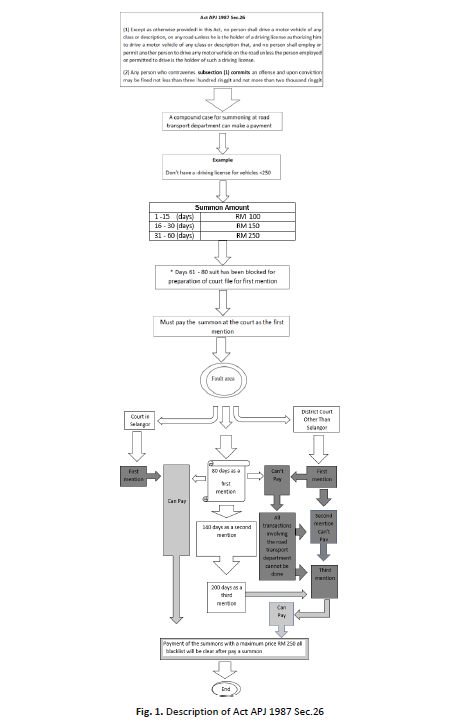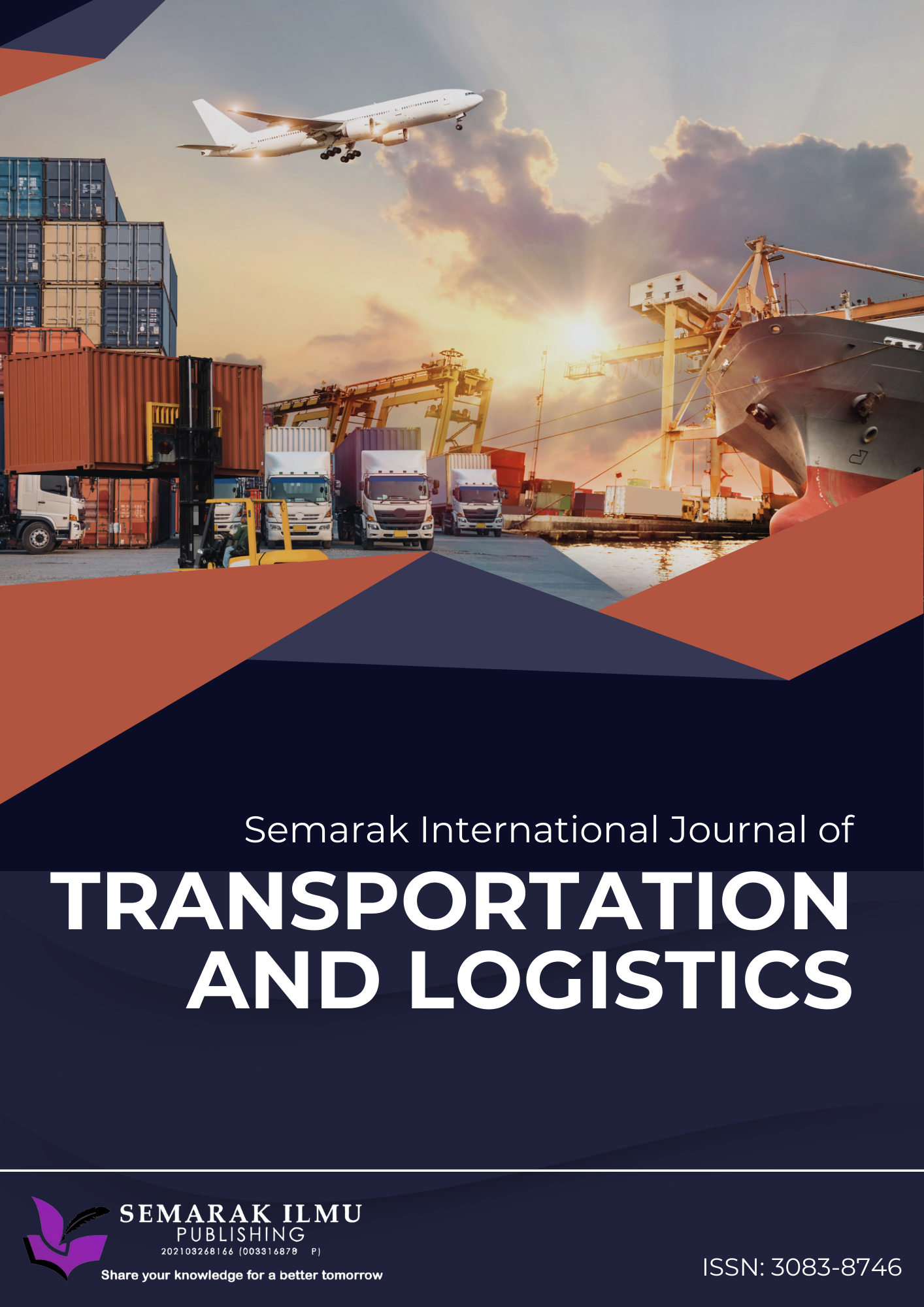Synchronizing the Standard Operating Procedures (SOP) for Compound Cases Re-Summons
DOI:
https://doi.org/10.37934/sijtl.3.1.1528Keywords:
Standard Operating Procedures (SOP), Discharged Not An Acquittal (DNAA), standardization of Standard Operating Procedures (SOP)Abstract
This study focuses on the challenges faced at the Counter Summons Again for Cases Discharged Not An Acquittal (DNAA), particularly during the Covid-19 pandemic, when civil servants were required to follow rapidly changing Standard Operating Procedures (SOPs) while still performing their duties. As frontliners, these officers had to deal with public frustration, especially from individuals unable to renew their driving licenses due to expired summonses that could no longer be paid at the counter and instead required court appearances. This situation reflects a larger issue within the SOP framework, the procedures, though well-intended, were not adaptable enough to accommodate the unique and evolving circumstances brought on by the pandemic. The main objective of this study is to examine the effectiveness and suitability of the current SOPs in handling such exceptional cases and to propose necessary improvements that would help streamline services at the DNAA counter. Using a qualitative approach, this research analyzes actual cases and officer experiences at the DNAA counter to identify gaps and inefficiencies in SOP implementation. It also explores how the rigidity of existing SOPs prevents officers from offering practical solutions to the public during emergency conditions. The findings indicate that there is an urgent need to revise the SOPs to better align with real-world situations, allowing for more flexible and responsive public service. In doing so, this would also support the broader mission of the Malaysian Road Transport Department (RTD) to standardize and strengthen national transportation procedures while ensuring efficient service delivery in times of crisis.
References
[1] Akyar, Isin. "Standard operating procedures (what are they good for?)." Latest research into quality control 12 (2012): 367-91. https://doi.org/10.5772/50439
[2] Bailey, John. 2018. Standard Procedures and Quality Control. Quality Press.
[3] Bailey, Luke. Standard Operating Procedures and their Effect on Confidence Levels. University of North Texas Health Science Center at Fort Worth, 2018.
[4] Zulkifli, Amyzulliana, and S. Sarifah Radiah Shariff. "Factors influencing staff complying with SOP: a study at Road Transport Department (RTD) Kota Bharu, Kelantan." Malaysian Journal of Computing (MJoC) 8, no. 2 (2023): 1482-1494.
[5] Brunsson, Nils, Andreas Rasche, and David Seidl. "The dynamics of standardization: Three perspectives on standards in organization studies." Organization studies 33, no. 5-6 (2012): 613-632. https://doi.org/10.1177/0170840612450120
[6] Zulkifli, Amyzulliana, and S. Sarifah Radiah Shariff. "Factors influencing staff complying with SOP: a study at Road Transport Department (RTD) Kota Bharu, Kelantan." Malaysian Journal of Computing (MJoC) 8, no. 2 (2023): 1482-1494.
[7] Du Plessis, Sophia, Bjoern Hartig, Ada Jansen, and Krige Siebrits. "Improving payment of traffic fines with financial incentives: Discounts vs. penalties." Transportation research part F: traffic psychology and behaviour 74 (2020): 298-306. https://doi.org/10.1016/j.trf.2020.08.019
[8] Dusek, Libor, Nicolas Pardo, and Christian Traxler. Salience, incentives, and timely compliance: Evidence from speeding tickets. No. 2020/9. Discussion Papers of the Max Planck Institute for Research on Collective Goods, 2020. https://doi.org/10.2139/ssrn.3600770
[9] Irawan, Agus. "Analysis on Implementation of Standard Operating Procedures (SOP) in the Directorate General of Taxes (DGT), the Ministry of Finance (MoF) of the Republic of Indonesia." (2017).
[10] Irawan, Dwi. "The Impact of SOP on Organizational Standardization." Journal of Business Systems 12, no. 3 (2017): 112–119.
[11] Kulkarni, Vivek. 2025. “SOP-Agent: LLM-Based Agentic Workflows for Automating SOPs.” arXiv preprint. https://arxiv.org/abs/2503.15520.
[12] Loke, Siew-Phaik, Ayankunle Adegbite Taiwo, Hanisah Mat Salim, Alan G. Downe, and Universiti Teknologi Petronas. "Service quality and customer satisfaction in a telecommunication service provider." In International conference on financial management and economics, vol. 11, no. 2, pp. 23-29. 2011.
[13] Melyng, Amanda, Dewi Kartika, and Yuli Sari. 2024. “Improving Training Systems through SOP Integration.” Journal of Business and Management Education 6 (1): 45–57.
[14] NSKT Global. 2023. “Implementing Standard Operating Procedures for Business Success.”
[15] O’Higgins, Edward. 2023. “The Impact of Business Architecture Practices on Strategic Alignment and Service Delivery.” arXiv preprint.
[16] Penchansky, Roy, and J. William Thomas. "The concept of access: definition and relationship to consumer satisfaction." Medical care 19, no. 2 (1981): 127-140. https://doi.org/10.1097/00005650-198102000-00001
[17] Schmidt, R. H., and P. D. Pierce. "The use of standard operating procedures (SOPs)." In Handbook of hygiene control in the food industry, pp. 221-233. Woodhead Publishing, 2016. https://doi.org/10.1016/B978-0-08-100155-4.00016-9
[18] Shah, S. S., A. R. Jaffari, J. Aziz, W. Ejaz, I. Ul-Haq, and S. N. Raza. "Interdisciplinary Journal of Contemporary Research in Business." International Research Centre 3, no. 4 (2011): 1–986.
[19] Standard Operating Procedure (2021,Vol2) "The Procedure for managing the registration and updating of prosecution cases under APJ 1987 and ALPKP 1987"
[20] Steiner, Nicolae. "Standard Operating Procedures (SOP) in Emergency Situations Management in Health System." Management in Health 18, no. 4 (2014): 14-16.
[21] Sutton, Scott. "the importance of a Strong SoP System in the QC microbiology lab." Journal of GXP Compliance 14, no. 2 (2010): 44.
[22] Winarno, Heru, Denny Santoso, and Arif Permadi. "Effect of SOP Application and Work Environment on Employee Performance." International Journal of Applied Social Science and Education 2, no. 3 (2023): 58–65.











